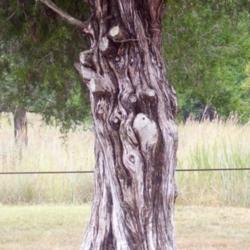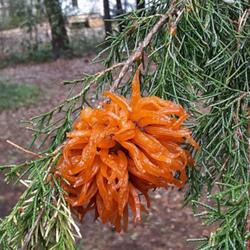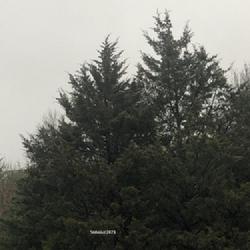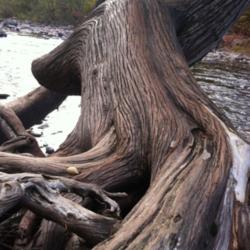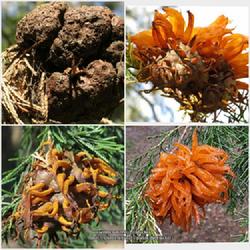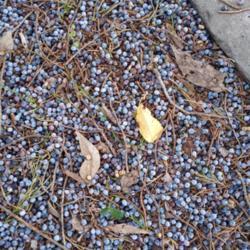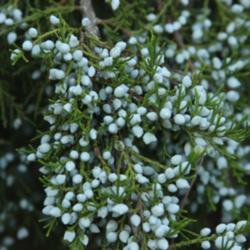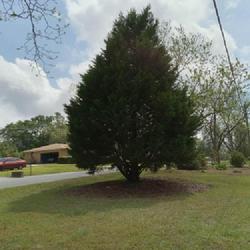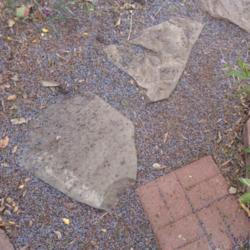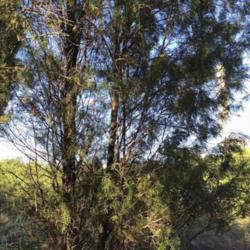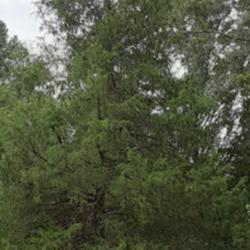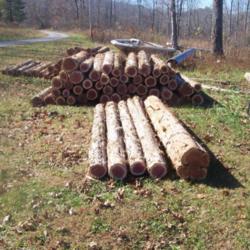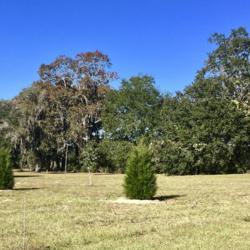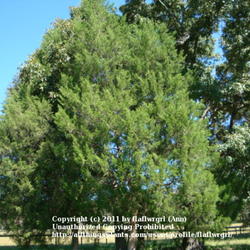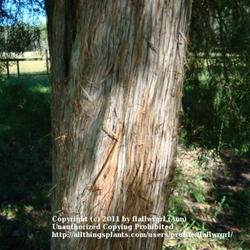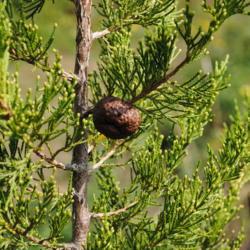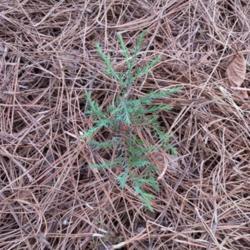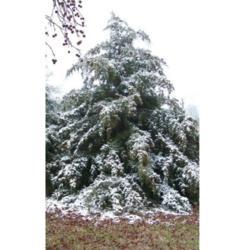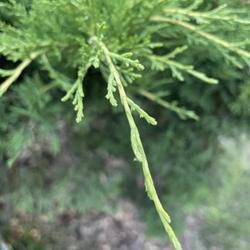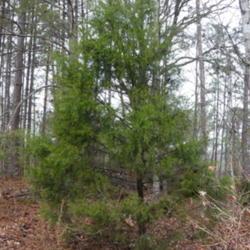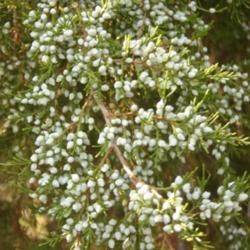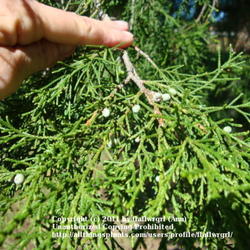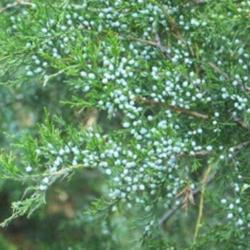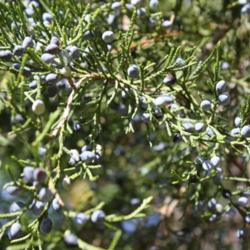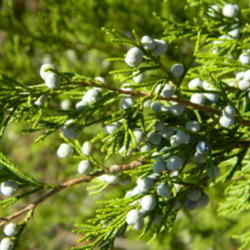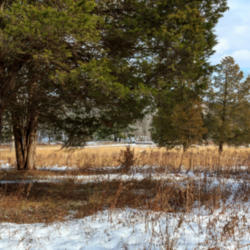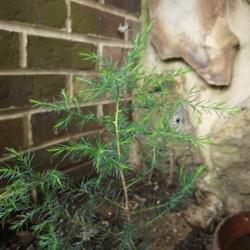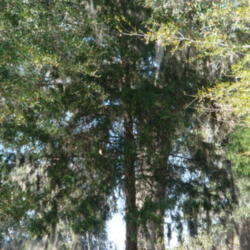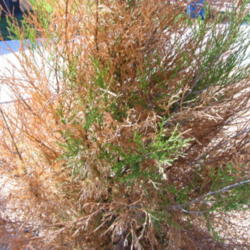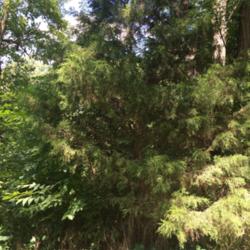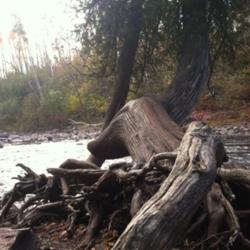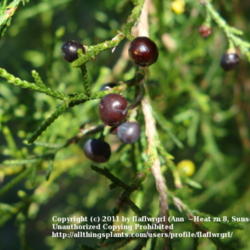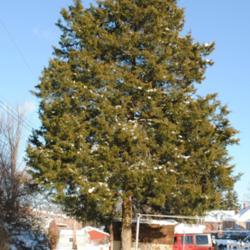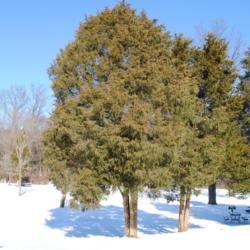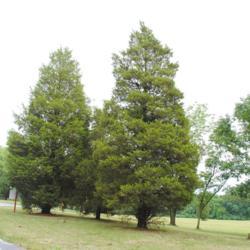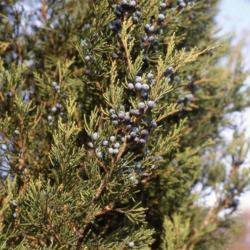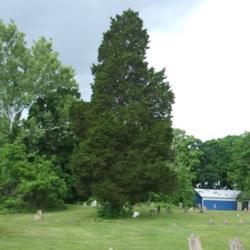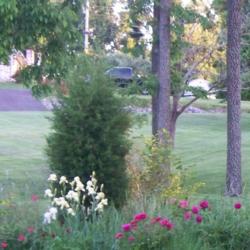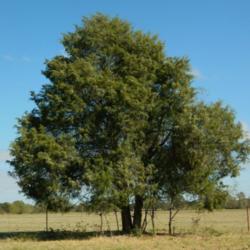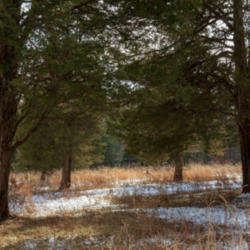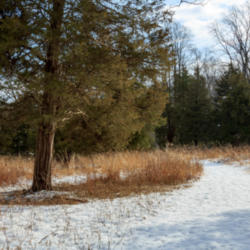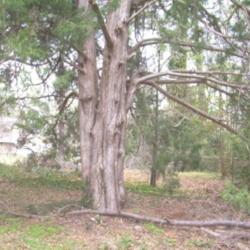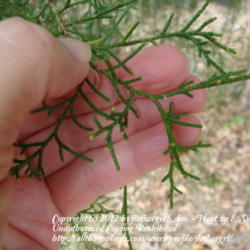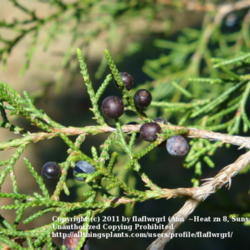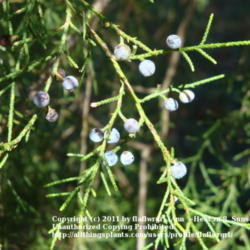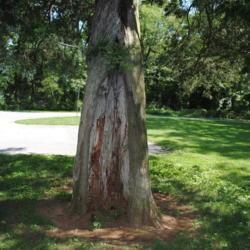Posted by
Sharon (Calvert City, KY - Zone 7a) on Nov 23, 2011 1:49 PM concerning plant:
The red cedar tree has a tremendous history, both legendary as well as medicinal. Our Native American ancestors used teas made from it as various cures for ailments, but the cedar chippings themselves with their aromatic scent were used as well. In Appalachia, a mixture of nuts, leaves, and cedar twigs is often still boiled and inhaled as a treatment for bronchitis.
Sources tell me that cedarwood oil is used in insect repellants, perfumes and soaps. Cedar chips have been used as moth repellants. The oil also shows up in furniture polish. These are some of the same uses that I grew up with in the southern Appalachians. We also used cedar chips as bedding for our dogs.
It was also considered to be a revered tree, holy, because the souls of ancestors resided within the tree. Legend has it that it remains evergreen because of those souls. It's a beautiful tree with an unusual history. Where it grows wild, seedlings sprout nearby in abundance.
Posted by
ILPARW (southeast Pennsylvania - Zone 6b) on Jan 15, 2018 7:10 PM concerning plant:
The Eastern Redcedar Juniper is a common species growing in upland locations on hills, slopes, and fields in a large native range from southern Maine down to just over the north Florida border into east Texas up to western Nebraska, to eastern South Dakota & southern Minnesota to southern Wisconsin & Michigan into the southern tip of Ontario. The sort of prickly foliage is made of younger awl-like needles and older, soft scale-like needles bluish or grayish or bright green. It reproduces by tiny yellowish male cones on all male trees and by tiny red-purple female cones on all female plants borne in spring. The female plants bear gray or blue berry-like cones that are loved by birds and small mammals. It grows about 1 foot/year and lives about 300 years. It has shallow, fibrous roots and yet develops a taproot, but can be transplanted in spring or fall. This American species often is infected with the Cedar Rust fungus that originally came over from east Asia, but does not damage the juniper, only developing a rounded brown gall housing the spores. (The similar Chinese Juniper does not show any galls or at least any big ones.) After being released during wet weather in spring, the spores infect various members of the huge Rose Family as Apples, Crabapples, Serviceberry, Hawthorns, Pears, and Floweringquince, where the foliage of the deciduous plants become spotted with yellow and brown spots in late summer and fall. Otherwise, this is a good quality, reliable coniferous tree. There are a number of compact and dwarf cultivars that have been taken from this species.
Posted by
LoriMT (Dawsonville, GA - Zone 8a) on Mar 7, 2022 9:35 AM concerning plant:
The Eastern redcedar is native across the eastern US, from Canada to Florida and west to Texas. This tree is dioecious, with separate male and female plants. To tell the difference, look for green flowers followed by grayish-blue quarter-inch berry-like cones on female eastern redcedars. The male eastern redcedars produce yellow flowers followed by brown, pollen-bearing cones on the branch tips.
Posted by
gingin (Fountain, Florida - Zone 8b) on Nov 11, 2011 1:37 PM concerning plant:
At Christmas when I make wreaths, I add cuttings of this...the blue of the berries adds color and interest.
